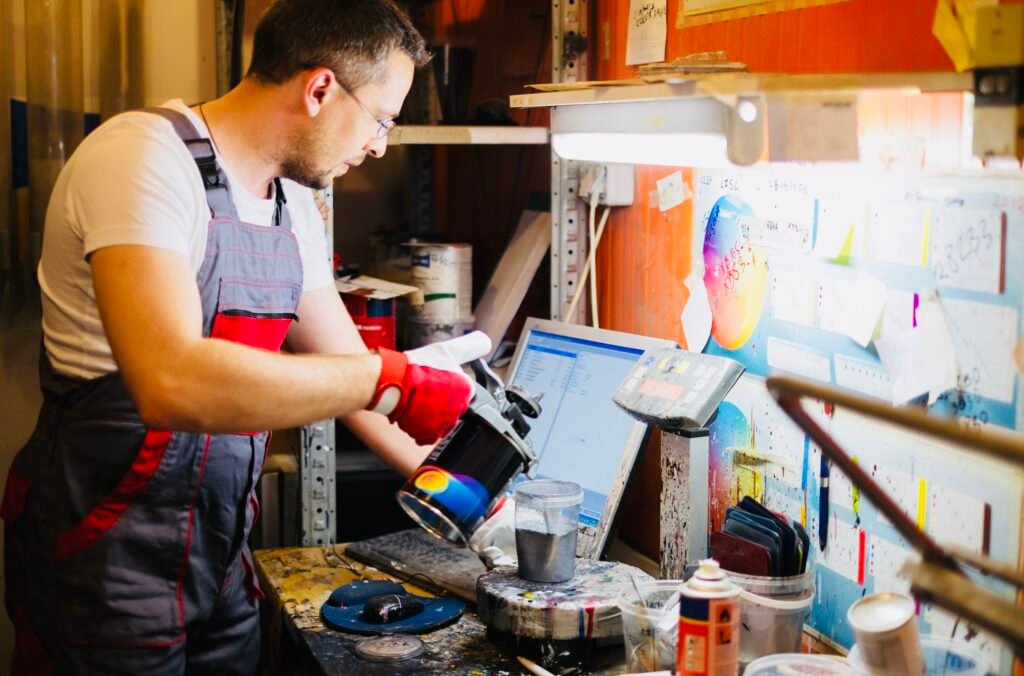Reviving Frozen Paint: A Comprehensive Guide to Salvaging Your Paint Cans
Whether you’re a seasoned DIY enthusiast or an occasional painter, you may have encountered the frustration of discovering that your paint cans have been subjected to freezing temperatures. The good news is that frozen paint doesn’t necessarily mean the end of its usefulness.

This comprehensive guide will explore How To Restore Frozen Paint, ensuring you can revive those colorful hues for your next project.
Understanding the Impact of Freezing on Paint
Before diving into the restoration process, it’s necessary to understand how freezing temperatures affect paint. When paint freezes, the water content inside can expand, causing the color to separate or become grainy. Additionally, the consistency and texture may change, making it challenging to achieve a smooth finish when applied.
How To Restore Frozen Paint: Paint Restoration Guide
Thawing the Paint
The first and most straightforward step is allowing the frozen paint to thaw. Bring the paint cans to room temperature by placing them in a warmer environment. Avoid direct heat sources like heaters or open flames, which can damage the paint. Patience is vital; allow the color to thaw naturally.
Checking for Separation
Once the paint has thawed, inspect it for signs of separation. Stir the paint thoroughly using a paint stir stick. If you notice any lumps or separated components, proceed to the next step.
Straining the Paint
Strain the paint using a fine mesh strainer or cheesecloth to address separation and texture issues. Pour the paint through the strainer into a clean container, removing clumps or impurities. This step is crucial for achieving a smooth and consistent paint consistency.
Adding Thinner
Consider adding an appropriate paint thinner if the color appears too thick or has a pasty consistency. Start by adding small amounts and stirring thoroughly until you reach the desired consistency. Be cautious not to over-thin the paint, which can affect its performance.
Mixing Additives
Some paints benefit from adding specific additives to improve texture and performance. Consult the paint manufacturer’s recommendations or consider using paint conditioners or flow agents to enhance the paint’s work ability.
Testing on a Small Surface
Before committing to a larger project, test the restored paint on a small, inconspicuous surface. This allows you to assess the paint’s color accuracy, consistency, and adhesion. If you are satisfied with the results, use the paint for your intended project.
Tips for Preventing Paint Freezing
While reviving frozen paint is possible, preventive measures can save you the hassle.
Here are some tips to prevent your paint from freezing in the first place:
Storage in a Climate-Controlled Environment
Store your paint cans in a climate-controlled environment where temperatures are less likely to drop below freezing. A basement or insulated storage space is ideal for maintaining a consistent temperature.
Protecting Paint During Transport
If transporting paint during cold weather, ensure it is adequately insulated.
Wrap the paint cans in blankets or use insulated containers to prevent exposure to freezing temperatures.
Regularly Inspect Stored Paint
Periodically check the storage conditions of your paint, especially during colder seasons. This proactive approach lets you identify potential issues before the paint is compromised.
Dealing with Color Discrepancies
Sometimes, freezing can cause pigments to separate, leading to color discrepancies within the paint. If you notice variations in color after restoring the paint, consider mixing the paint thoroughly and performing color tests on scrap materials.
Adding a slight tint or pigment to match the original color may be necessary.
Special Considerations for Water-Based Paints
Water-based paints, including latex paint and acrylic, are more resilient to freezing than their oil-based counterparts. However, if these paints have frozen, they may exhibit a thicker consistency. In addition to standard restoration steps, use warm water baths or place the paint cans in a heated room to expedite thawing.
Utilizing Paint Conditioners for Enhanced Results
Paint conditioners are specially formulated additives designed to improve the quality of aged or frozen paint. These products can enhance the paint’s flow, leveling, and adhesion. Follow the manufacturer’s instructions for the specific paint conditioner you choose, and incorporate it during the restoration process for optimal results.
The Role of Humidity in Paint Restoration
High humidity can impact the effectiveness of paint restoration efforts, especially for water-based paints. If you’re working in a humid environment, take extra care to stir the paint thoroughly and consider using dehumidifiers to create a more favorable working atmosphere. This is particularly crucial when dealing with delicate color-matching tasks.
Storing Restored Paint Properly
Once you’ve successfully restored your frozen paint, proper storage is essential to maintain its quality. Ensure lids are tightly sealed to prevent air exposure and store the paint in a cool, dry place. Consider labeling the paint cans with the restoration date and any additives used for future reference.
Consulting the Paint Manufacturer
If you encounter difficulties or have questions about restoring a particular brand of paint, don’t hesitate to contact the manufacturer. Most paint manufacturers provide contact information on their websites or product labels. They can offer valuable insights, recommendations, and guidelines for restoring paint products.

Common Paint Types and Restoration Techniques
Different paint types may require specific restoration techniques.
Here’s a breakdown of how to restore common types of paint:
Latex Paint
Latex or water-based paint is more forgiving when exposed to freezing temperatures. Follow the general restoration steps mentioned earlier, ensuring thorough stirring and straining. Add a small amount of water to achieve the desired consistency if needed.
Oil-Based Paint
Oil-based paints are more sensitive to freezing, and their restoration may require additional steps. In addition to thawing, stirring, and straining, consider adding a compatible paint thinner to restore the paint’s original properties.
Acrylic Paint
Acrylic paint, commonly used in artistic endeavors, can be restored by following the general steps outlined. Thoroughly stir the paint, strain if necessary, and add water or a specialized acrylic medium to achieve the desired texture.
Advanced Restoration Techniques
For those seeking an extra level of precision in restoring frozen paint, consider these advanced techniques:
Mechanical Agitation
Use a power drill with a paint mixer attachment for thorough mechanical agitation. This method ensures a more consistent and uniform blend, especially for larger quantities of paint.
Warm Water Bath
For quicker thawing, immerse the tightly sealed paint can in warm water. Avoid using hot water, as this can affect the paint quality. After the paint has thawed, stir and strain as needed.
Professional Paint Shaker
Some hardware stores or paint retailers have paint shakers designed to restore paint. Use this service for a thorough and efficient restoration process.
Safety Precautions
When restoring frozen paint, prioritize safety.
- Wear appropriate protective gear, including gloves and eye protection, especially when working with paint thinners or conditioners.
- Work in a well-ventilated area to minimize inhalation exposure to fumes.
- If using chemical additives, follow the safety guidelines provided by the product manufacturer.
Recycling Old Paint Cans
If you find some paint is beyond restoration or have leftover paint that won’t be used, explore local recycling options. Many communities have programs for recycling paint, and some paint retailers may accept old cans for proper disposal. Be environmentally conscious and inquire about recycling opportunities in your area.
Conclusion
Remember that patience and precision are essential to revive frozen paint. By following the instructions mentioned in this writing on How To Restore Frozen Paint for your restoration process, you ensure optimal results and gain a deeper understanding of the nuances involved. Transforming frozen paint into a usable and vibrant medium is not just a practical skill—it’s a testament to resourcefulness and a commitment to minimizing waste in your creative endeavors.
Happy painting!

